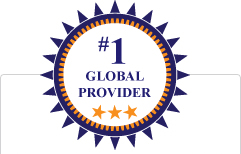...
How would you like to be a Guest Blogger for KMI? Email us at: info@kminstitute.org and let us know your topic(s)!
New Year's Resolutions - Knowledge Management Edition
 Guest Blog by Zach Wahl of Enterprise Knowledge LLC
Guest Blog by Zach Wahl of Enterprise Knowledge LLC
If you’re like many, at this time of year, you’re tossing the last of the fruit cake, sweeping the pine needles, and shelving the holiday decorations for Of course, it’s also that time of year to begin making resolutions for the year to come. At Enterprise Knowledge, we’re proud to have helped many organizations achieve their Knowledge and Information Management (KIM) project goals over the last year. As your organization is making its own New Year’s resolutions for the year to come, keep these common New Year’s Resolutions and KM success stories in mind.
• Meet Someone New – As KM concepts have matured, we’ve gone from simply capturing, managing, and sharing knowledge and have added the additional facet of human expertise and interaction into the equation. Well-designed knowledge and information management systems allow people to quickly and intuitively share and find the information they need; they can also allow people to discover and connect with experts. For instance, in 2014 for a global manufacturing firm we designed a knowledge base that housed a range of content as well as profiles of identified experts within the organization. Users of the system are able to employ faceted navigation to find both the content as well experts within the organization based on topics, types, regions, and functional area. Moreover, users are able to “traverse” content in order to find the owners/creators of the content they found the most valuable. As a result, connections are being made and this global organization is making better use of their collective expertise around the world.
• Get Organized – At EK, one of our areas of focus is taxonomy design. Taxonomy design is all about organizing and categorizing information in order that it is easier to find and manage. In 2014 alone we helped over two dozen organizations through our Taxonomy Design Workshops and proven methodology. A well-designed and well-implemented taxonomy will help organizations better use and reuse their information, and will also help users discover information they didn’t know existed that will be able to benefit them and save time. As a result, organizations and their users are more efficient, more successful, and more connected.
• Lose Weight – As KIM technologies have proliferated, it is unfortunately common, especially in larger organizations, for multiple overlapping systems and technologies to weigh down the organization with administrative burden, license costs, and confused or distracted end users. SharePoint is a common example in many organizations, where lack of system and content governance has resulted in runaway sites that duplicate effort and compete for users. We also see completely separate systems that effectively do the same thing competing within a single enterprise. For instance, in 2014, EK worked with a large Federal agency to conduct an enterprise analysis of their content and document management processes and technologies. We found that different parts of the organization were running eight distinct but similar document management technologies. We developed the business case to justify the consolidation of design, content, processes, and technology into a single system. The return on investment (ROI) for this effort is in the millions of dollars.
• Learn Something New – Any successful KIM initiative will help you and your end users learn something new. We’ve already established the myriad ways KIM projects and systems can support the improved findability, use, and reuse of information, the sharing and capture of knowledge, and the identification and connection to experts. In our experience though, the journey itself is part of the learning process. Well-run KIM initiatives will not only yield the desired end product, they will yield an improved understanding of the organization as a whole, and a view towards additional ways the organization can improve their knowledge and information management practices and standards. Our discovery and design workshop methodologies are all about helping organizations better understand their processes, their people, and their technologies.
• Clear the Clutter – One of the common challenges many organizations face within their knowledge systems is information bloat. When we perform content reviews and analyses on existing information systems, we find a mass of information that is out-of-date, inaccurate, duplicate, or just plain useless. For instance, for one recent services organization we were asked to help them clean up and migrate their content from their legacy systems to the new system we’d helped them design. We leveraged both manual and semi-automated means of analyzing the content. Of the roughly 650,000 documents held within their legacy systems, we found that 20% was duplicative, 20% was outdated, and 30% hadn’t been accessed by anyone over the last two years. We focused on migrating the remaining 200,000 or so documents and ensuring they were properly tagged and managed over the long-term. This “cleansing” alone vastly improved user satisfaction and trust within the system. It also vastly improved the overall findability of the information within the system.
Whatever your organization’s New Year’s resolutions might be, we wish you the best in the year to come. And, of course, if you need a little help achieving those resolutions, we look forward to hearing from you.
Enterprise Knowledge is led by Zach Wahl, who serves as a faculty member for the Knowledge Management Institute, providing training and consulting on taxonomy design and development. Zach regularly teaches the Certified Knowledge Specialist - Taxonomy course in our Washington, DC location.
RECENT POSTS
...









 ...
...
